
The Bug was here – An Arsonist Tale
From Collin Hall
Mem No 271
As firemen at RAF Eastleigh, which was near Nairobi for the geographically challenged, most of our daily grind involved the airfield, and the domestic side was something we rarely thought too much about. Domestic fires were rare, very rare in fact, although we did have delivered a brand new Bedford Domestic. We’d previously used an old Bedford tanker with a trailer pump attached. Our Flt Sgt, an old ‘died in the wool’ type, promptly ruled the new vehicle must not turn out unless the trailer pump was attached! I think wiser and younger counsel eventually prevailed!
Fires, as I say were rare, but then, completely out of the blue, we started get real turnouts to real fires, a whole series of them. There was one in the cinema, and in a parked ambulance outside Sick Quarters, and it became obvious that these fires were no accidents. Then the Camp Hobbies Club, which was mainly for vehicles people were working on, but was fairly well equipped with everything they needed, went up in a major conflagration. It was a long way past saving when we got there, so it was pretty obvious it had been helped along. There were gas cylinders cooking off, so we kept our distance! The camp was then on full alert, and we had extra men on shift, and extra security around the whole Camp, but we still managed to have yet another fire, this time in a kerosene store, our kerosene store, that is , where we stored the cans used to refill the Gooseneck flares. Now this was getting serious! We actually dealt with that fire very quickly, because not only were we getting better at this firefighting game, but it was quickly spotted. If any real heat had got to those four-
he had been at all the fires, although he wasn’t always on duty at the time! Then, amazingly, we found a beer mat with “The Firebug was here” written on the back!
A page for members and guests to post and view details of prangs, fires or any memorable incidents they have experienced during their service. If you have anything you want to share, whether it be first hand accounts, official reports, links to other sites, photographs, or anything you've got that I can publish, please send to webmaster@rafanddfsa.co.uk.
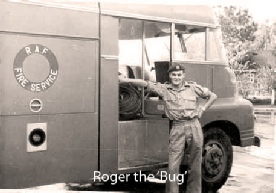
So things were getting a bit tense around the place, although to be honest, I think we firemen weren’t all that unhappy at all the fire practice we were getting! Then we got a call to a barrack block our barrack block! The smoke had been spotted in the roof space and when we gained entry, and I was first up, the fire was out, but one severely burned culprit, who turned out to be one of us, a fireman, was still there! Had he succeeded with this particular fire, and he had a can of petrol, there would have been no escape for those of us in the roof space. So, we got him and his can out of there and into the open air, where he was promptly removed to Sick Quarters, under guard. So the crisis was over, and, believe it or not, we trooped off to the NAAFI for a few Tuskers, and of course our firemen mate was the sole topic of discussion. It turned out that when we all got our heads together, we realized
The culprit was an SAC by the name of Roger Moore, and he subsequently was court-
Roger the Bug
ROYAL AIR FORCE FIREFIGHTERS TACKLE 100FT BLAZE UNDER HEAVY GUNFIRE
A brave team of Royal Air Force firefighters fought a 100ft blaze whilst under heavy insurgent gun fire on Friday night at Camp Bastion, Afghanistan. The fortified Camp came under attack by 15 heavily armed insurgents who had breached the perimeter fence. They were intent on causing maximum carnage and fired Rocket Propelled Grenades and AK-
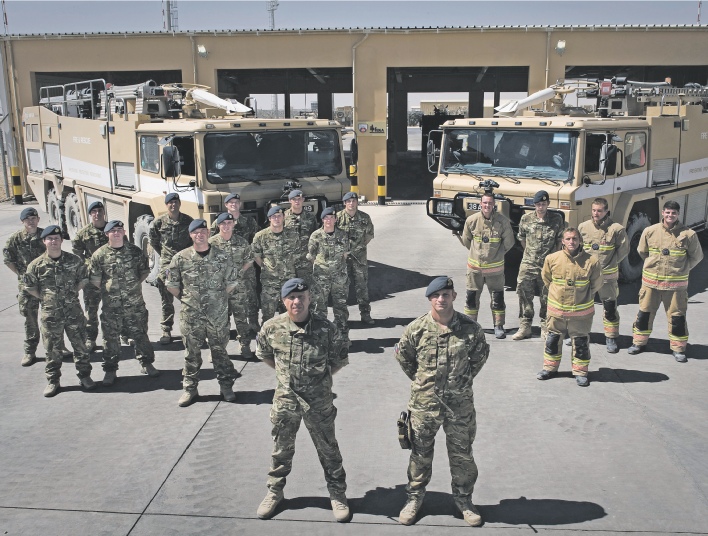
Sergeant Simon Allsopp was the crew commander responsible for controlling the chaotic scene. He said: "One of the crew shouted that he saw a rocket explode nearby and as I looked up I could see another one flying through the air. I yelled at my crew to stop fighting the fire and take whatever cover they could find". Sergeant Allsopp tried to radio for an update but came under heavy small arms fire. "As I tried to contact the HQ a burst of tracer was fired directly over our heads. For a moment it was quite surreal and then out of nowhere the Royal Air Force Regiment Force Protection assets arrived on the scene and immediately engaged the insurgents".
As soon as he realised how close they were to the fire fight Sgt Allsopp gave orders to all his crew to withdraw from the very dangerous situation. As the crews were withdrawing Sgt Allsopp was stopped in his tracks by the cries of "MAN DOWN". A Royal Air Force Regiment Gunner was injured and the firefighters provided immediate first aid.Cpl Parry, one of the firefighters who treated the casualty, said: "we only had basic first aid equipment with us so we had to improvise and use whatever we could. I used the sling from my rifle as a tourniquet before we dragged the casualty to safety".
Many of the crew had never tackled a blaze this big before and certainly never whilst under attack from Insurgents. Senior Aircraftsmen Jack Walsh, 21, the youngest member of the crew said: "I was quite excited but also apprehensive as we approached the blaze. I heard over the radio that there might be insurgents on the airfield. When we approached the blaze my training kicked in and all I thought about was putting out the fire. The Sergeant was great and used all his experience to control the situation."
Corporal Rob Wallman-
The fire crews were ordered back to base until the insurgent threat had been dealt with. Warrant Officer Steve Hollis said: "The lads were absolutely fantastic and I am really proud of them. They showed courage, skill and robustness to tackle the blaze under extreme circumstances. Never in my 31 years have I been involved in tackling a blaze whilst coming under attack with small arms fire and rockets – full credit to the guys for continuing to do their job in such difficult circumstances".
"The crews reacted quickly and performed outstanding fire fighting and military skills under extreme circumstances. The crews work long hours and do a difficult job in Afghanistan and in this incident demonstrated all the bravery, courage and determination required of an airman to undertake this task."
The event culminated when Warrant Officer Steve Hollis and Sergeant Chris Dooley went out with Force Protection assets to assess the area. The area was confirmed as being clear of insurgents so Warrant Officer Hollis took control of 52 UK firefighters and their sheer number ensured the remaining flames were extinguished within 2 hours
Flight Lieutenant Kev Baker said: "The accumulative effort of all firefighters ensured that multiple pieces of mission critical equipment was saved from the blaze. The entire compliment of RAF firefighters at Camp Bastion were involved during this incident and everyone displayed courage and determination in the face of adversity". The incident is now under detailed review. Group Captain Jeff Portlock, Bastion Joint Operating Base Commander said "This was a serious attack on Bastion. The response of the firefighters and Force Protection personnel was highly professional, most effective and extremely courageous. Through their efforts, the spread of the fire was controlled, the insurgents were contained and the damage limited. He added "Bastion was quickly back to full operational capability and we continue to support ISAF operations on the ground throughout the region".
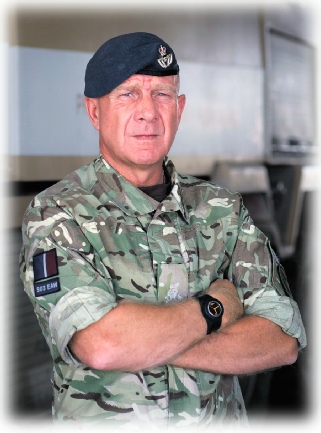
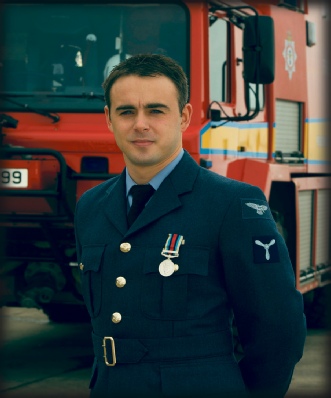
The following has been kindly provided by RAF News:
Fire fighters who battled raging flames under a hail of gunfire during a Taliban attack on Camp Bastion have been honoured by the UK’s political leaders at a medals ceremony at Westminster.
More than 50 members of the Air Force Fire and Rescue team were presented with their Operational Service Medals at the Houses of Parliament as recognition for their role protecting the ISAF base after a Taliban death squad breached the perimeter fence, in September last year.
RAF teams fought for six hours to quell the fire storm that threatened to engulf the air traffic control tower and fuel storage areas as the RAF Gunners repelled the heavily-
Two US Marines and 14 insurgents died in the attack.
SAC Dominic Garner said: “When the attack started we were a bit shocked and it took us a few moments to realise what was happening. As we reached the scene I could hear the incoming small arms fire and I saw a rocket propelled grenade fly past smashing into the blast wall 30 metres to our left.”
Force Fire Officer WO Stephen Hollis spoke of his pride in his men and the RAF Regt.
He said: “The RAF Regiment were awesome that night. Without them we could not have got out there to do our job.
“I am incredibly proud of the way the guys reacted as a team.”
The fire fighters were also honoured by ISAF Forces at Bastion before returning to the UK.
Speaking after they were presented with bravery awards last month, Camp Bastion Commander Gp Capt Jeff Portlock said: “All members of the RAF Fire Service acted swiftly on the night of this serious attack, displaying total bravery and professionalism.”
The RAF team received their medals during a reception held by the All-
Introduced by Lord Lee of Trafford, and with Marshal of the Royal Air Force, The Lord Craig of Radley in attendance, the Servicemen were presented with their medals by the Deputy Serjeant-
There are currently more than 90 RAF Fire and Rescue Service personnel deployed around the World, including on Operation Herrick in Afghanistan.
When not on operations, they provide a quick reactive resilience force that safeguards the Defence Estate and can be called upon to assist local authorities with serious incidents
WO Steve Hollis
SAC Dominic Garner
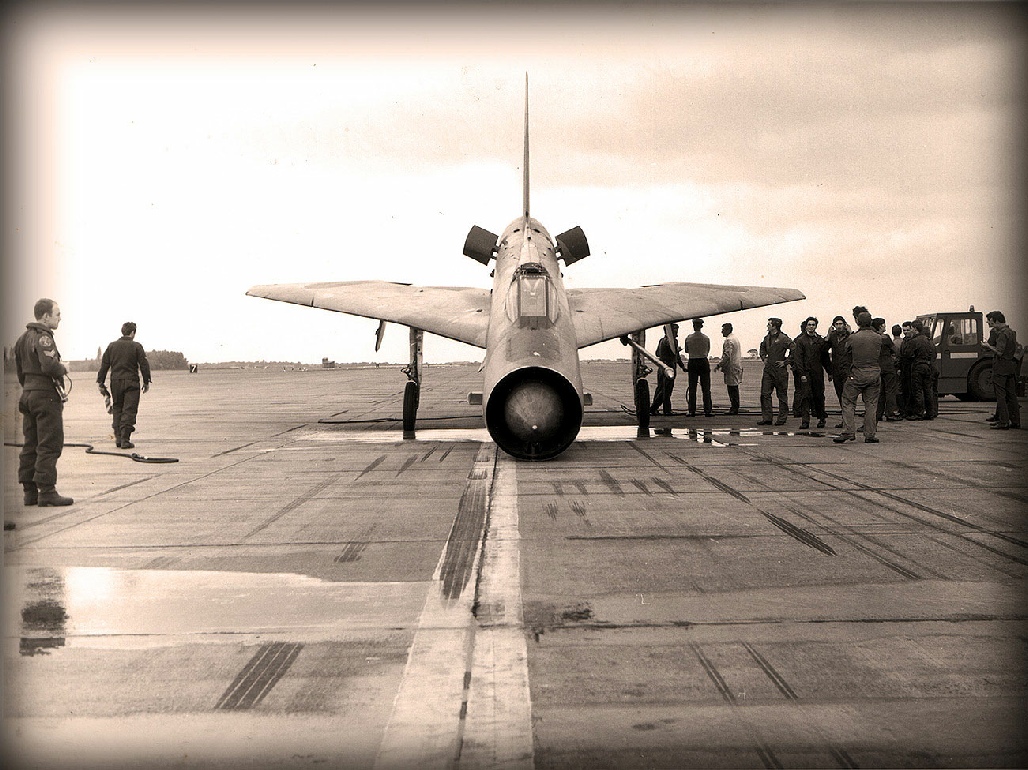
The above photograph was taken at RAF Coningsby on 14 September 1979. The Lightning was based at RAF Binbrook but on returning to its home base the pilot became aware that his nose wheel had failed to lower. Binbrook was at the time the duty Quick Reaction Alert (QRA) Station and it was deemed inappropriate to attempt a landing at Binbrook. The pilot was instructed to divert to Coningsby. The aircraft duly arrived in the Coningsby circuit and a State two emergency was called. Duty crash crew consisted of George Edwards i/c, Bob Wilding two i/c, John Cleminson Pete Thompson Ray Hunt Del Fisher Geordie Martin Ivan Symcox Brian Peterson and a very young fireman by the name of Gordon Smith ( our Association Chairman ).
Gordon had not long been out of training and his crew position on the day was rear seat passenger on Crash 1. I think it was his first response to a airfield emergency. Bob Wilding i/c Crash 1 duly briefed Gordon in his own inimitable style and informed him prior to deploying to the aircraft that the next time Crash One stopped he wanted the TACR hose line out in double double quick time.
After several circuits the pilot positioned for his landing and the combine was instructed to follow the aircraft as soon as its rear wheels touched down. We deployed to our pre determined airfield emergency readiness positions and as soon as the Lightning rear wheels hit the runway we started to follow the aircraft. As we started our chase air traffic radioed that the combine was to stop and await further instructions . All the crew were aware of this new development except the unfortunate Gordon who was sat in splendid isolation in the rear alcove of Crash 1. As the combine vehicle came to a halt, as instructed Gordon aware of his last instruction from Bob Wilding immediately ran out the TACR hose line. No sooner had he completed his task when air traffic instructed the combine to resume its chase of the Lightning . Gordon was surprised to say the least when he had successfully completed his task only to be told by a very animated Bob Wilding to get the hose back on the vehicle or words to that effect. Gordon's new task was completed even faster and Crash 1 then led the combine in its chase after the Lightning.
It was a remarkable sight as we followed the Lightning and watched the sparks fly as the aircraft's nose gradually lowered until it was soon scraping along the runway. When the aircraft came to rest the combine were ready in position to carry out any necessary and appropriate fire fighting action and Gordon had once more deployed the Crash 1 hose line in record time. As it was, the aircraft crash landed without catching fire thanks to an excellent piece of airmanship by the pilot (Squadron Leader Piper). Both the station Commander and Squadron Leader Piper thanked the crew for their support and one could see the sense of relief on Squadron Leader Pipers face as he was assisted out the aircraft by the Crash 1 crew . This could be considered a fairly routine incident but for Gordon Smith I am sure it was an incident that he will never forget.
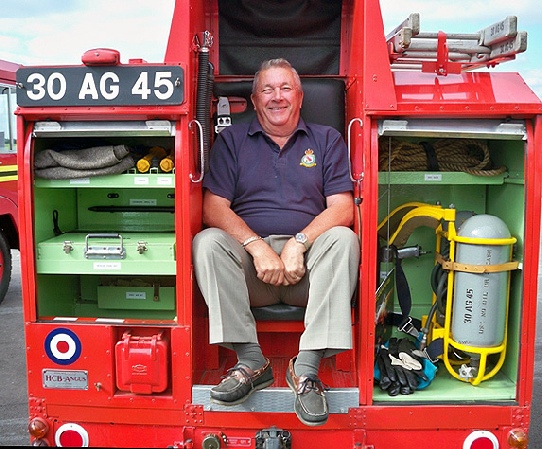
For those not familiar with the rear position on the TACR I have attached a photo of our Association Vice President Ron Brown sat in the position in a lot more relaxed conditions than those experienced by Gordon during our Lightning incident of 1980 However Ron during his time at RAF Gutersloh spent many an hour or two in what must have been the worst of all RAF Fire Vehicle positions.
George Edwards BEM
Note from webmaster:
The Mk6 Lightning XS903 shown in this article was built at Salmesbury and made it's maiden flight on 17 August 1966. It survived a number of incidents during its RAF life before being retired from service and flown to Elvington on 18 May 1988. It can still be seen at the Yorkshire Air Museum where it is now displayed sporting a pair of recently fitted over-
Dave
